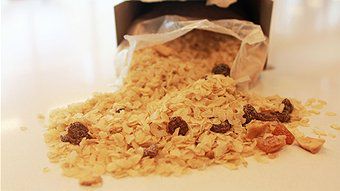Most of us do it each morning without thinking – open the cardboard cereal box, open the inner plastic liner, pour out our cereal, fold the inner liner over, close the box and put it back on the shelf.

Looking at my recycling bin, the cardboard cereal box makes quite a regular appearance.
But why is it there at all?
Cereal is double-packaged. The inner plastic liner keeps the food fresh. And the box does what?
Look pretty?
Stack nicely on the supermarket shelf?
Waste a whole lot of paper resources, printing and transport just so it can go in the recycling bin?

Box, then bag, then cereal?

Shelves and shelves of extra packaging. Why?
So I’ve come to the conclusion that the box is of no use whatsoever, other than to put more pressure on our environment.
I now preferentially choose cereal with just one layer of packaging rather than two.
Will you?



I enjoyed this article.